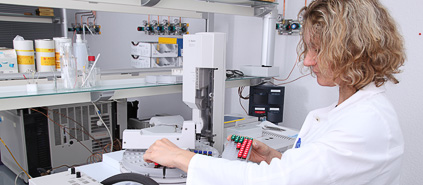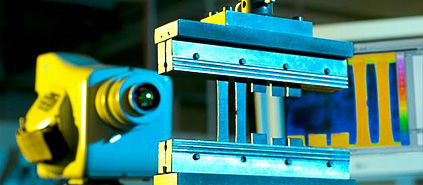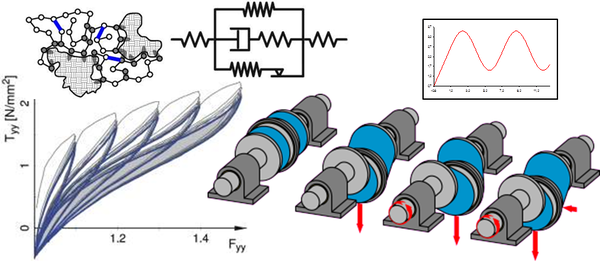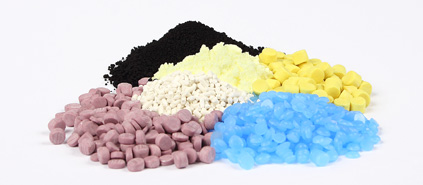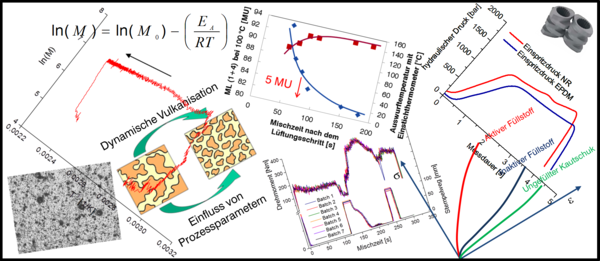Elastomer Chemistry
- Characterization of multiphase systems (morphology)
- Polymeric fillers
- Rubber/ filler interaction
- Crosslinking
- Aging mechanisms
- Modification of fillers and polymers
- Nanomaterials (synthetic and bio-based)
- Leachables and extractables out of polymer materials
- Elastomer emissions and environmental exposure
- Transport processes in polymers for gases and fluids in elastomers
Elastomer Physics
- Lifetime prediction of compounds unter dynamic load
- Fracture mechanics and fatigue
- Contact mechanics and friction
- Special investigations of material homogeneity with X-ray tomography (CT)
- Acoustic damping and friction properties
- Dynamical mechanical properties up to high frequencies
- Magnetorheological elastomers for sensor technology and adaptive systems
Material Concepts and Modeling
- Friction and wear
- Polymer networks and blends
- Fillers and reinforcement
- Dielectric spectroscopy
- Dynamic-mechanical analysis
- Rheology of rubber melts
Simulation and Continuum Mechanics
- Problem based material models for e.g. filled elastomers, thermoplasts, TPVs, foamed materials (under consideration of the Mullins and Payne effect, material damping and anisotropy)
- Implementation of novel material model concepts in commercial FE programs e.g. Abaqus, MSC.Marc
- Parameter identification via homogeneous and inhomogeneous load distribution
- Simulation of fatigue and ageing processes
- Material damping and anisotropy
Processing Methodology
- Additive manufacturing of elastomer parts based on filled rubber compounds
- Direct bonding of 2-component parts using 2K-injection moulding
- Thermally optimized rubber injection moulding
- Thermoplastic elastomers (TPVs) based on dynamic vulcanization processes
- Investigation of mixing efficiency regarding distributive mixing using Laser-Induced-Breakdown-Spectroscopy
- Recycling strategies / devulcanization of rubber powder
Materials Development and Testing
- Development of new materials
- Development of measuring methods
- Physical testing as per standardized methods
- Characterization of the distribution of fillers in rubber compounds
- Vulcanization kinetics
- Influence of polymer and filler structure on processing
- Definition of quality characteristics of new raw materials
- Determination of aging behavior of elastomers under thermal and medial as well as dynamic load, with particular attention given requirements specific to the automotive industry
